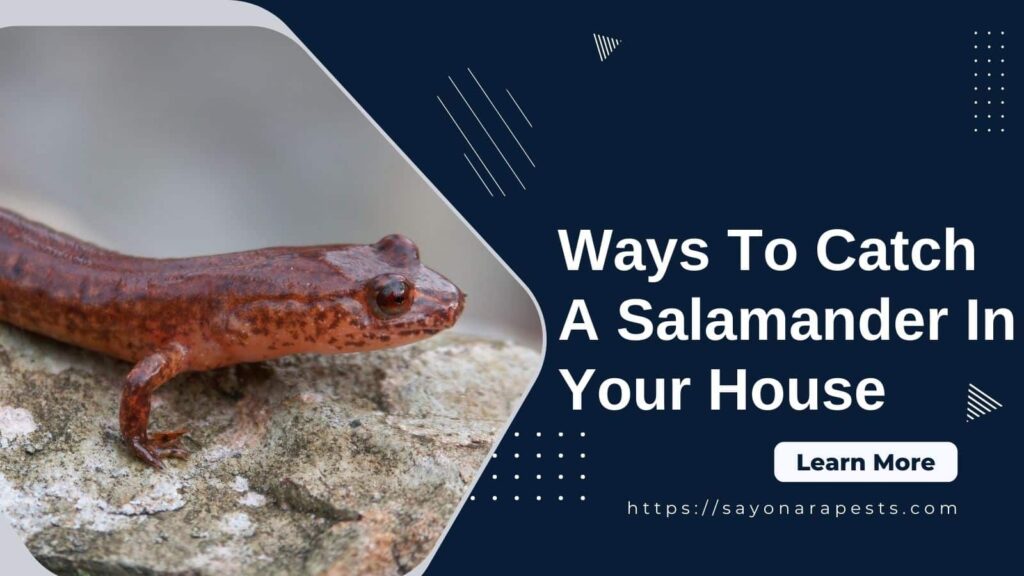Homeowners are frequently finding small animals in their homes. A typical animal that homeowners find is a salamander.
Salamanders are amphibians that typically have smooth, moist skin and long tails. They can be found in damp places such as under rocks, fallen leaves, and logs.
While they benefit the environment, you probably don’t want them in your home. While salamanders are not dangerous to humans, they can carry diseases that are harmful to humans, such as Salmonella bacteria.
In addition, some salamanders secrete toxins from their skin that can be harmful if ingested by humans or pets.
If you have a salamander in your home, it is essential to take precautionary measures to avoid contact with the animal.
If you’ve ever woken up in the middle of the night to find a slimy salamander crawling across your pillow, then you know how important it is to be able to catch them quickly and release them outside.
Look for them at the right location and time of year
Depending on the salamander species, they can be found in different locations and at different times of the year.
Some prefer to live in damp, dark places like caves, while others are often found near ponds or other bodies of water.
The time of year also matters – in the spring and summer, they’re more likely to be out and about, while in the fall and winter, they’re more likely to be hibernating.
Knowing where they’re likely to be and when is essential to catch a salamander.
Researching the specific species of salamander that are common in your area is an excellent place to start.
Close all windows
The first step is to ensure that all your windows and doors are tightly sealed.
Salamanders can squeeze through tiny cracks and crevices, so checking around all potential entry points is essential.
Once you’ve done that, you can set up a trap.
How to trap a salamander?
1. Bucket trap
One of the most effective traps is a simple bucket trap. Just take a bucket and fill it with an inch or two of water.
Place the bucket sideways down on the floor (assuming your floors are not carpeted) so the salamander has to crawl into it to get inside.
Then, put some bait inside the bucket (salamanders are attracted to insects, so something like crickets or grasshoppers will work well) and wait for the salamander to crawl in.
Once it does, simply lift the bucket and release the salamander outside.
The Salamander will be attracted to the light and climb up the stairs into the container.
Be sure to check the traps regularly so that you can release the Salamanders outside as soon as possible.
2. Glue trap
Another trap that works well is a glue trap. You can purchase these at most hardware stores.
They work by coating the surface with a sticky substance on which the salamander gets stuck when it tries to crawl over it.
Just be sure to check the trap regularly so that you can release any captured salamanders as soon as possible.
3. Funnel trap
You can also make a funnel trap out of a piece of paper. Just roll the paper into a cone shape and place it on the floor with the small end.
Catching a salamander in your house can be challenging, but it’s possible with patience and effort.
By ensuring all of your windows and doors are sealed tightly and setting up a trap, you should be able to catch any unwanted guests relatively quickly.
Why Is There A Salamander In My House?
There are a few reasons why you might find a salamander in your house.
The most common reason is that they’re simply looking for a place to hide from predators or escape the heat.
Another possibility is that they’re looking for food – insects are attracted to houses, so it’s not uncommon for salamanders to follow them inside in search of a meal.
One of the most likely reasons also is it accidentally came in through an open door or window. Salamanders are good climbers and can squeeze through very small spaces.
Once inside, they’ll often hide under furniture or in dark corners where they feel safe.
If you have a salamander in your house, the best thing to do is to gently capture it and release it back outside.
Finally, it’s also possible they were brought into your house by mistake.
For example, if you have potted plants outside, a salamander could have crawled into the pot and then been brought inside when you moved the plant.



